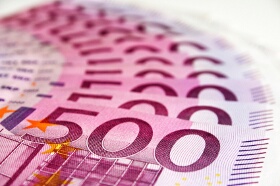The euro plunged to new multi-year lows against its major rivals as negative factors persisted, driving the shared 19-nation currency down. This is not necessary bad for the eurozone as the weaker currency helps European exporters.
There are plenty of reasons for the euro to go down. One of them is the quantitative easing program that the European Central Bank has started on Monday. Of course, Greece remains a sore topic. And on top of that, couple of European banks failed the stress test of the Federal Reserve. The Fed announced today:
The Federal Reserve objected to the capital plans of Deutsche Bank Trust Corporation and Santander Holdings USA on qualitative concerns. The Federal Reserve did not object to any plans based on quantitative grounds.
All these factors made it reasonable to expect extreme weakness from the euro. Indeed, the currency of the eurozone slid to the lowest level since March 2003 against the US dollar, to the weakest rate since November 2007 versus the Great Britain pound and to the lowest since June 2013 against the Japanese yen.
EUR/USD dipped from 1.0679 to 1.0552 (1.3 percent ) as of 22:54 GMT today. EUR/GBP went don from 0.7094 to 0.7062, reaching the low of 0.7014 intraday. EUR/JPY dropped from 129.46 to 128.14.
If you have any questions, comments or opinions regarding the Euro,
feel free to post them using the commentary form below.
